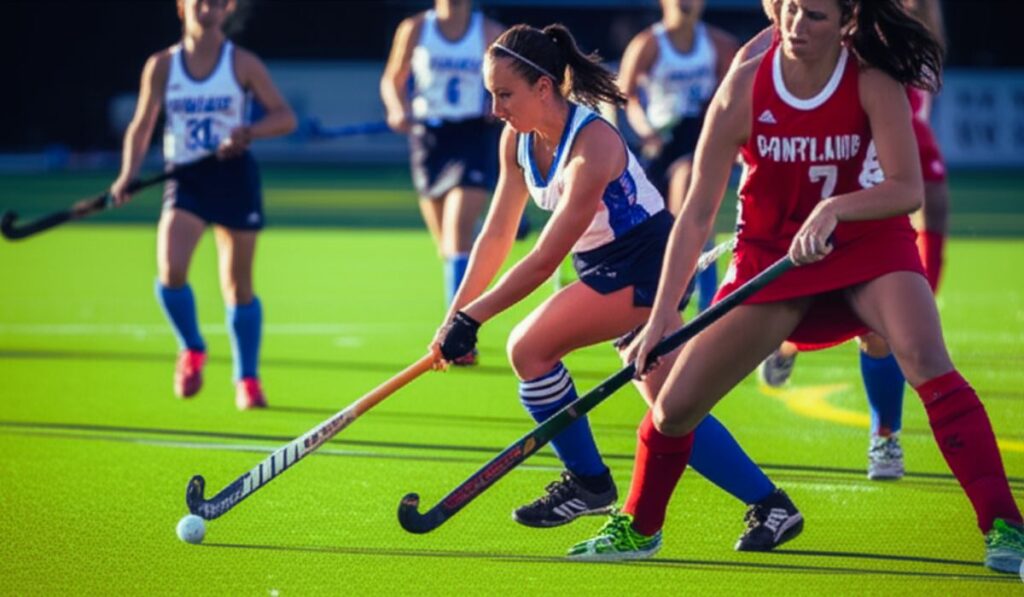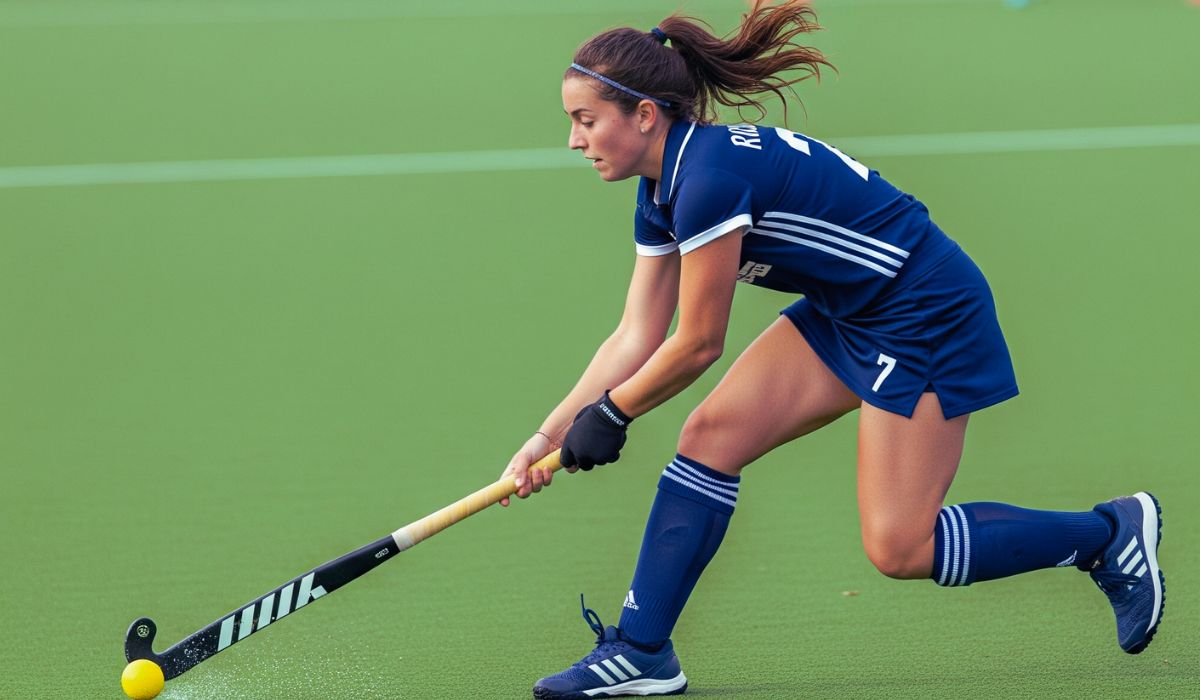Why Most Players Misjudge the Field Hockey Push Pass—and How It Can Transform Your Game Overnight
The Quiet Power of an Underestimated Skill
The field hockey push pass is often dismissed as basic—or worse—boring. Yet when executed with precision, it’s the most seductive pass in the game. A crisp glide, feather-light contact, zero wind‑up. It’s the kind of pass that deceives defenders, calms frantic circulation, and opens space like a whisper in a storm. Understanding its subtlety is the first step toward mastering field hockey’s most underrated weapon.
Why Players Often Overlook It
Many young or ambitious players assume that power equals success. They focus on slap hits, aerial balls, or brute-force pushes. Meanwhile, the push pass—the one that gels teams, creates rhythm, and slices through tight defense—quietly gets ignored. You might feel tempted to chase flash, but those who embrace control find themselves orchestrating play, not just reacting to it.
Anatomy of the Technique: From Grip to Release
A perfect field hockey push pass begins with gentle contact. Your top hand grips the stick lightly, bottom hand provides subtle direction. As the head glides along the ball’s side, pressure comes from the wrists, not the shoulders. The follow-through is minimal: the stick stops when the ball lands in place. No flailing, no noise—just buttery precision. It’s less about aim and more about feel.
Sensory Reward: When Everything Feels Alive
There’s a singular moment when you feel the Hockey Push Pass connect: no thud, no shock—just a clean vibration and the ball floating forward. That sensory reward becomes addictive. The sweet feedback wakes every nerve in your arm. Each pass becomes a conversation with your stick. And once your senses wake up to that feel, there’s no going back to heavy, clumsy hits.
The Tactical Return on Technique
High value, low effort—that’s the brilliance of the Hockey Push Pass. In midfield, it creates triangular patterns. In attack, it opens pockets for dribblers. In defense, it neutralizes pressure within two touches. That punch‑line simplicity makes possession elegant. It allows you to control tempo—demanding respect from opponents who can’t predict your next move.

Mistakes That Strip Away Its Magic
Poor timing, stiff wrists, or dragging the stick too long can turn a Hockey Push Pass into a penalty. Many beginners lean too heavy on their target or pivot the wrong direction, causing passes to bobble or drift wide. A failed push pass isn’t just a missed opportunity—it disrupts rhythm, costs trust, and invites turnovers. Understanding failure is essential to mastering the touch.
Emotional Shift from Rushing to Flowing
When you start executing reliable Hockey Push Pass under match pressure, something changes. Fear dims. Control kindles. You become the steadiness in your team. Instead of frenzied reactions, you inspire composed plays. That shift—from rushed to fluid—not only wins games, but transforms how you lead on the pitch.
Comparing Push to Drive: Why Both Matter
Hockey Push Pass offer finesse but limited range. Drive passes deliver distance and speed. Elite players blend both—push for control, drive for urgency. Combine them, and you create a rhythm opponents struggle to read. Using the push pass within five meters, then unleashing a quick drive downfield, becomes a lethal rhythm. That interplay defines dominance.
Practice Drills That Bring the Push Alive
To refine your Hockey Push Pass, start with wall drills: Hockey Push Pass softly against a sturdy wall, aim for consistent bounce-back. Then partner drills: ten passes each, only with one touch. Next, short-circuit drills combining push and drive alternation. When your hand learns this rhythm, you’ll see the field differently. Speed won’t scare you. Shape will intimidate your opponents.
The Grip That Consistency Deserves
A tight overgrip or worn-down stick handle can dull the feedback your hands rely on. Use a slightly tacky cushion grip that allows control without overenthusiasm. Replace worn grips every season. Your equipment might not be flashy, but it needs to be tactile. Precision begins with touch—and that touch begins with a healthy grip.
The Secret Weapon Every Beginner Overlooks
Among all the moves in field hockey, the Hockey Push Pass seems deceptively simple. Yet, this technique is often the quiet force behind seamless ball movement and smart tactical play. While some players chase power and flair, seasoned athletes know that the field hockey push pass, when mastered, opens up the field like a secret door to opportunity.
Understanding the Core of the Push Pass
At its heart, the Hockey Push Pass is about finesse. Unlike a hit or slap, this pass involves gently pushing the ball along the turf using the stick while maintaining full control. It’s often used for short to medium distances, where accuracy matters more than power. The subtlety of this move allows players to make smooth, almost sensual transitions on the field without disrupting the rhythm of the game.
Why Precision Beats Power Every Time
There’s a seductive beauty in precision. With a well-executed Hockey Push Pass, you don’t just move the ball—you guide it. This control makes it ideal in tight situations where power might create chaos. When you learn how to control this pass, you’re not just becoming a better player—you’re becoming a smarter one.
The Emotional Impact of a Perfect Pass
Think of the adrenaline surge when you deliver a flawless Hockey Push Pass that cuts through defenders and lands perfectly at your teammate’s stick. That instant connection, that fleeting moment of trust and success, is one of the most emotionally charged experiences in the game. A push pass isn’t just physical—it’s deeply psychological.
Common Mistakes That Ruin the Magic
Sadly, many players underestimate this pass. They either grip the stick too tightly, lose their body positioning, or rush the motion. These mistakes strip the pass of its elegance. A poor Hockey Push Pass breaks the flow, risks turnovers, and shatters momentum. Understanding what not to do is just as important as mastering what to do.
What is a Push Pass in Field Hockey?
Hockey Push Pass in field hockey is a short, controlled method of passing the ball by pushing it along the ground with the flat side of the stick. Unlike a hit or slap shot, the ball never leaves the turf, making this pass ideal for close-range play. It emphasizes accuracy and speed over raw power.
Why the Push Pass Matters More Than You Think
While it may look simple, the Hockey Push Pass is one of the most important techniques in field hockey. It allows players to keep possession under pressure and move the ball quickly between teammates. The beauty of the push pass is its quiet efficiency — it doesn’t attract attention, but it sets up game-changing plays.
How to Grip the Stick for Maximum Control
Grip is crucial for a successful Hockey Push Pass. Your left hand should be at the top of the stick, guiding the motion, while the right hand supports and stabilizes. A soft, controlled grip helps prevent overexertion and ensures smooth delivery.
Push Pass vs. Hit: Knowing When to Use Which
In contrast to the Hockey Push Pass, a hit is more powerful and often used for long-distance passes or shots on goal. The Hockey Push Pass is better suited for confined spaces or when maintaining possession is critical. Knowing which to use at the right time is what separates a good player from a great one.
When and Where to Use the Push Pass
The Hockey Push Pass is most useful in midfield play, during quick give-and-go combinations, and when navigating tight defensive setups. It’s often employed during free hits and sideline restarts due to its precision.
Advantages of Mastering the Push Pass
Mastering the Hockey Push Pass provides players with a reliable tool to maintain possession, break down defenses, and control the game tempo. It’s also safer, as it reduces the risk of lifted balls and dangerous plays.
Common Mistakes to Avoid
Common errors include incorrect body alignment, lifting the ball off the ground, or using too much force. These mistakes can result in turnovers or fouls. Players should focus on staying low, controlled, and composed.
Drills to Improve Your Push Pass
Some of the best drills include wall passes, triangle passing with teammates, and cone navigation. These drills enhance timing, accuracy, and spatial awareness, all of which are vital to improving push pass performance.
How Coaches Teach Push Pass to Beginners
Coaches often introduce the Hockey Push Pass through slow, repetitive motion and video analysis. Emphasis is placed on footwork, stick control, and vision. Beginners are encouraged to start with static drills before moving into live play.
Push Pass in Defensive Strategy
Defenders use the Hockey Push Pass to clear the ball out of the defensive zone without losing control. It’s especially helpful when the team is under pressure and needs to switch play quickly across the field.
Push Pass in Offensive Playmaking
In attack, the push pass is essential for building momentum. Quick, short passes help outmaneuver defenders and open up shooting opportunities. It’s often used in penalty corners and circle penetrations.
Psychological Impact of a Smooth Push Pass
A successful Hockey Push Pass can elevate a player’s confidence and establish trust among teammates. Smooth passing increases team morale and creates rhythm. The mental impact of precise passing should not be underestimated.
Why the Push Pass Matters More Than You Think
While it may look simple, the push pass is one of the most important techniques in field hockey. It allows players to keep possession under pressure and move the ball quickly between teammates. The beauty of the push pass is its quiet efficiency — it doesn’t attract attention, but it sets up game-changing plays.
The Right Technique: Body and Stick Position
To execute a Hockey Push Pass effectively, a player needs to align their body sideways to the direction of the pass. Knees should be slightly bent, with the ball positioned near the front foot. The stick should remain in contact with the ball throughout the motion. A proper follow-through ensures accuracy.
How to Grip the Stick for Maximum Control
Grip is crucial for a successful push pass. Your left hand should be at the top of the stick, guiding the motion, while the right hand supports and stabilizes. A soft, controlled grip helps prevent overexertion and ensures smooth delivery.
When and Where to Use the Push Pass
The push pass is most useful in midfield play, during quick give-and-go combinations, and when navigating tight defensive setups. It’s often employed during free hits and sideline restarts due to its precision.
Common Mistakes to Avoid
Common errors include incorrect body alignment, lifting the ball off the ground, or using too much force. These mistakes can result in turnovers or fouls. Players should focus on staying low, controlled, and composed.
Drills to Improve Your Push Pass
Some of the best drills include wall passes, triangle passing with teammates, and cone navigation. These drills enhance timing, accuracy, and spatial awareness, all of which are vital to improving push pass performance.
How Coaches Teach Push Pass to Beginners
Coaches often introduce the push pass through slow, repetitive motion and video analysis. Emphasis is placed on footwork, stick control, and vision. Beginners are encouraged to start with static drills before moving into live play.
Psychological Impact of a Smooth Push Pass
A successful push pass can elevate a player’s confidence and establish trust among teammates. Smooth passing increases team morale and creates rhythm. The mental impact of precise passing should not be underestimated.
Push Pass and Game Speed
One major benefit of the push pass is its contribution to overall game speed. Because the ball stays grounded and controlled, it allows for rapid transitions and fluid movement, giving teams a competitive edge.
Why Every Player Should Master It
Regardless of position—forward, midfielder, or defender—the push pass is a fundamental skill every player should master. It serves as the backbone of team play, linking actions together and ensuring consistent performance on the field.
The Role of Vision in Effective Push Passing
A good push pass starts with great vision. Players must constantly scan the field to spot opportunities and anticipate movements. Being able to read the game and identify passing lanes makes a player indispensable.
Incorporating Feints into Your Push Pass
Adding a deceptive body movement or eye fake before a push pass can confuse defenders and open up more space. These subtle tricks elevate a player’s effectiveness and make their passes harder to predict.
Push Passes Under Pressure
In fast-paced situations, the ability to stay composed and deliver a clean push pass under pressure separates elite players from the rest. Practicing with time constraints or during scrimmages helps build this mental and physical resilience.
The Silent Assassin: How Push Passes Change Games Quietly
Unlike flashy aerials or booming hits, push passes rarely get the spotlight. Yet they are often the silent assassins behind scoring opportunities. Their subtle precision creates the space that leads to breakthroughs.
Field Positioning and Push Pass Strategy
Where players stand on the field when receiving and delivering push passes can greatly impact team flow. Understanding angles and spacing is key to maximizing the effectiveness of each pass.
Push Pass in Indoor Hockey
In the tighter confines of indoor hockey, the push pass is even more critical. The reduced space emphasizes control and short, sharp movement, making the push pass the primary method of advancing the ball.
Advanced Push Pass Techniques
As players grow more skilled, they can begin experimenting with advanced techniques like reverse stick push passes or no-look passes. These techniques, when executed correctly, can add flair and unpredictability.
Transitioning from Defense to Offense with a Push Pass
The push pass plays a pivotal role in transitions. A well-placed pass from a defender can launch a counterattack within seconds, catching opponents off guard and shifting the game’s momentum.
Communicating During Push Passes
Effective communication is vital during gameplay. Calling for the ball, signaling intention, or giving direction helps ensure the success of a push pass and builds overall team chemistry.
The Push Pass and Player Development
For young players especially, mastering the push pass builds a solid foundation for future growth. It teaches balance, coordination, field awareness, and technical control from an early age.

Using Push Passes to Control Possession
Possession is power in field hockey. Smart, well-timed push passes allow teams to retain the ball and dictate the game’s tempo, especially against more aggressive opponents.
Reading Defenders Before Passing
A good passer doesn’t just look at their teammate — they read the positioning of defenders too. Anticipating interception risks or closing gaps is essential to delivering a safe and effective push pass.
Creating Passing Triangles
One strategy that enhances push passing is the use of passing triangles. These formations allow for multiple passing options and smoother ball movement, making it harder for opponents to regain possession.
The Role of Timing in Push Passes
Even the most technically sound push pass can fail without proper timing. Understanding when to release the ball — whether quickly or after drawing in a defender — can be the difference between a turnover and a game-winning play.
Celebrating the Simplicity and Power of the Push Pass
In a sport filled with dynamic moves and explosive plays, the push pass stands out in its quiet excellence. Its reliability, precision, and versatility make it a cornerstone of field hockey — a move every player must not only learn but truly master.
Why Every Player Should Master It
Regardless of position—forward, midfielder, or defender—the push pass is a fundamental skill every player should master. It serves as the backbone of team play, linking actions together and ensuring consistent performance on the field.

